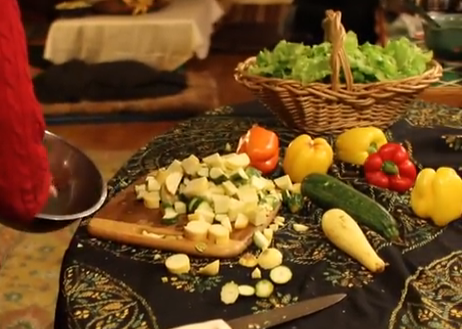 A family can dream of growing their own food on their own plot of land, and many will do it. But others end up dreaming of a good, affordable lawyer when the jaws of the law chomp down on their healthy horticulture. It’s just happened again–a 17-year-old organic urban food garden was shut down by a municipality in Florida with eyes bigger than its brain.
A family can dream of growing their own food on their own plot of land, and many will do it. But others end up dreaming of a good, affordable lawyer when the jaws of the law chomp down on their healthy horticulture. It’s just happened again–a 17-year-old organic urban food garden was shut down by a municipality in Florida with eyes bigger than its brain.
Many of us own or rent a house with a patio, balcony, or yard where we can grow your own food and natural remedies. But be advised that in some cities there are laws against growing consumable crops on your own land. Scattered reports from cities like
Des Moines, Iowa, Orlando, Florida, Tulsa, Oklahoma, Oak Park, Michigan, and Drummondville, Quebec, tell of people being fined or even having their gardens “confiscated” (destroyed) by city officials enforcing regulations that require yards to look and function a certain way: as decorations. The most egregious assault on property rights in recent memory occurring in Texas that was documented in a lively We Are Change video of what befell the innocent, earth-friendly farmer and his team.
But, fear not (too much). If you’re required to follow silly laws and still want a garden harvest, there are many plants you can grow for food or seasoning that also qualify as ornamental plants, so you and your city can live in harmony. There are also a few tricks for placing food plants within an ornamental garden where they can thrive without drawing attention to themselves.
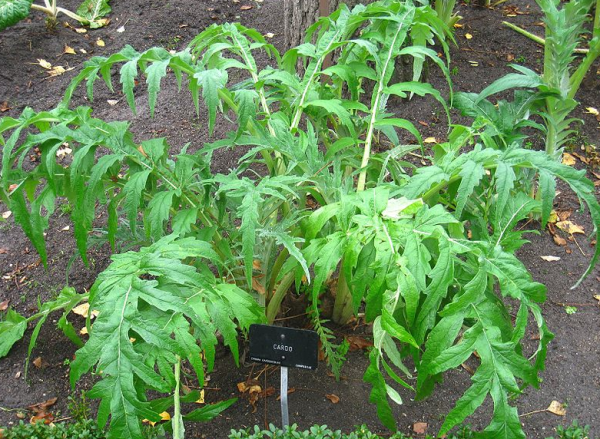 If you love artichokes, but don’t think your city likes the sprawling blue-green perennial, try growing its relative, cardoon. The scientific name of the plant is Cynara cardunculus, and it’s the wild forbear of the edible artichoke. Luckily it has a long history as a decorative plant, beloved for its dramatic purple flowers. As with ordinary artichokes, the flower bud is edible. The stems of cardoon are also good when braised; French and Italian cooks use it in soups, and in New Orleans, it’s battered and fried. Cardoon is a tough plant suited for all but the most extreme climates.
If you love artichokes, but don’t think your city likes the sprawling blue-green perennial, try growing its relative, cardoon. The scientific name of the plant is Cynara cardunculus, and it’s the wild forbear of the edible artichoke. Luckily it has a long history as a decorative plant, beloved for its dramatic purple flowers. As with ordinary artichokes, the flower bud is edible. The stems of cardoon are also good when braised; French and Italian cooks use it in soups, and in New Orleans, it’s battered and fried. Cardoon is a tough plant suited for all but the most extreme climates.
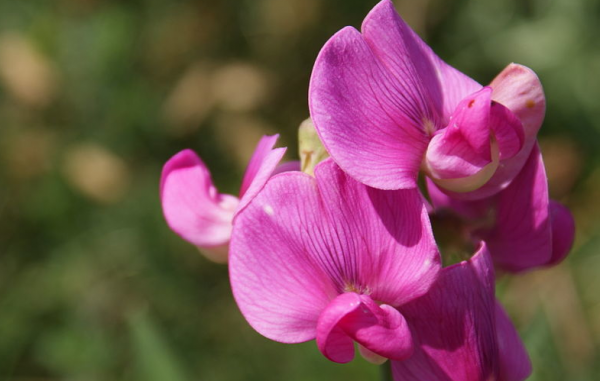 Want to make your own split pea soup? Go ahead and grow some peas, known to science as Pisum sativum. Just be sure to hide them on trellises shared with ornamental sweet peas (Lathyrus odoratus), and no one will be the wiser. You’ll have the benefit of the color and scent of the sweet pea blossoms, while the less showy white flowers of edible peas develop into a snack or meal ingredient that is always better picked fresh than trucked for days from distant farms. If you have cold winters, wait until the soil temperature reaches 50 degrees Farenheit before planting, but don’t wait too long, because peas (sweet or otherwise) don’t do well in high heat. If you live somewhere that doesn’t freeze, you can plant peas in fall for a head start, and avoid the risks of planting in spring when heat starts to increase.
Want to make your own split pea soup? Go ahead and grow some peas, known to science as Pisum sativum. Just be sure to hide them on trellises shared with ornamental sweet peas (Lathyrus odoratus), and no one will be the wiser. You’ll have the benefit of the color and scent of the sweet pea blossoms, while the less showy white flowers of edible peas develop into a snack or meal ingredient that is always better picked fresh than trucked for days from distant farms. If you have cold winters, wait until the soil temperature reaches 50 degrees Farenheit before planting, but don’t wait too long, because peas (sweet or otherwise) don’t do well in high heat. If you live somewhere that doesn’t freeze, you can plant peas in fall for a head start, and avoid the risks of planting in spring when heat starts to increase.
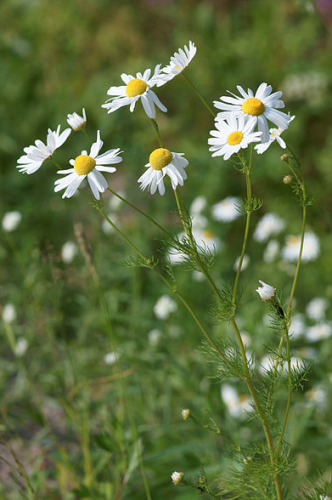 Maybe worrying about gardening ordinances keeps you up at night. In that case, you might resort to time-honored chamomile tea to help you get to sleep. Chamomile is a very low-growing species of daisy, with charming white-petalled flowers sporting big yellow centers. Botanists know the most popular variety as Chamaemelum nobile. You can plant it just as you would a lawn, by sowing seeds and watering. It likes well-drained, acidic soil, so it might struggle if you’ve got the dreaded clay soil that drains poorly. Chamomile is more than just a relaxing tea; it has compounds that are used in pharmaceuticals. It can interact with prescription medicines, and might even be dangerous during pregnancy, so go easy on the brewing until you’re sure able to use it safely. If you don’t end up drinking your lawn, you’ll have a beautiful carpet of tiny daisies in spring, and feathery bright green foliage the rest of the year. Once it’s been established, it’s likely to self sow in flower beds and flower pots, but it’s an easy plant to pull if you consider it a weed in those locations.
Maybe worrying about gardening ordinances keeps you up at night. In that case, you might resort to time-honored chamomile tea to help you get to sleep. Chamomile is a very low-growing species of daisy, with charming white-petalled flowers sporting big yellow centers. Botanists know the most popular variety as Chamaemelum nobile. You can plant it just as you would a lawn, by sowing seeds and watering. It likes well-drained, acidic soil, so it might struggle if you’ve got the dreaded clay soil that drains poorly. Chamomile is more than just a relaxing tea; it has compounds that are used in pharmaceuticals. It can interact with prescription medicines, and might even be dangerous during pregnancy, so go easy on the brewing until you’re sure able to use it safely. If you don’t end up drinking your lawn, you’ll have a beautiful carpet of tiny daisies in spring, and feathery bright green foliage the rest of the year. Once it’s been established, it’s likely to self sow in flower beds and flower pots, but it’s an easy plant to pull if you consider it a weed in those locations.
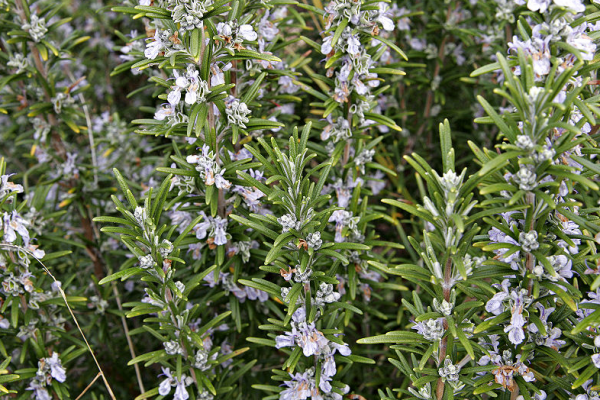 Need some privacy? Start a hedge of rosemary (Rosmarinus officinalis). It’s a hardy perennial, and the right varieties grow four to six feet high. Rosemary flowers are small, periwinkle blue, and trumpet-shaped, and the flowering season is long. There are varieties of rosemary that only get a foot or so high, and then start spilling over. These are excellent for yards with retaining walls, which let the branches spill down and soften the hard look of bricks or concrete.
Need some privacy? Start a hedge of rosemary (Rosmarinus officinalis). It’s a hardy perennial, and the right varieties grow four to six feet high. Rosemary flowers are small, periwinkle blue, and trumpet-shaped, and the flowering season is long. There are varieties of rosemary that only get a foot or so high, and then start spilling over. These are excellent for yards with retaining walls, which let the branches spill down and soften the hard look of bricks or concrete.
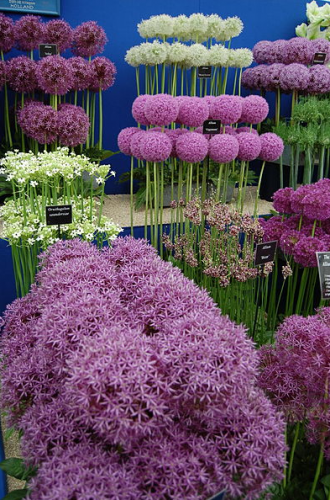 Love onions and garlic? Just call your edible bulbs “Allium,” the common name used for an ornamental plant in the onion family. It’s a great-looking flower, a big ball of star-like blossoms looking a lot like a giant dandelion, and if it’s surrounded by onions, chives, and garlic with their similar-looking blooms, no one will shed a tear.
Love onions and garlic? Just call your edible bulbs “Allium,” the common name used for an ornamental plant in the onion family. It’s a great-looking flower, a big ball of star-like blossoms looking a lot like a giant dandelion, and if it’s surrounded by onions, chives, and garlic with their similar-looking blooms, no one will shed a tear.
Of course, you can do a lot of growing in containers on a patio or porch, if that’s all you’ve got. The trick is to find out what your local laws allow, and then get creative with a mixture of straightforward pretty plants and hardworking food plants. Let us know what the laws are in your town, and please post pictures of your urban food grows in our upcoming We Are Change forum. Don’t be a vegetable–grow one!

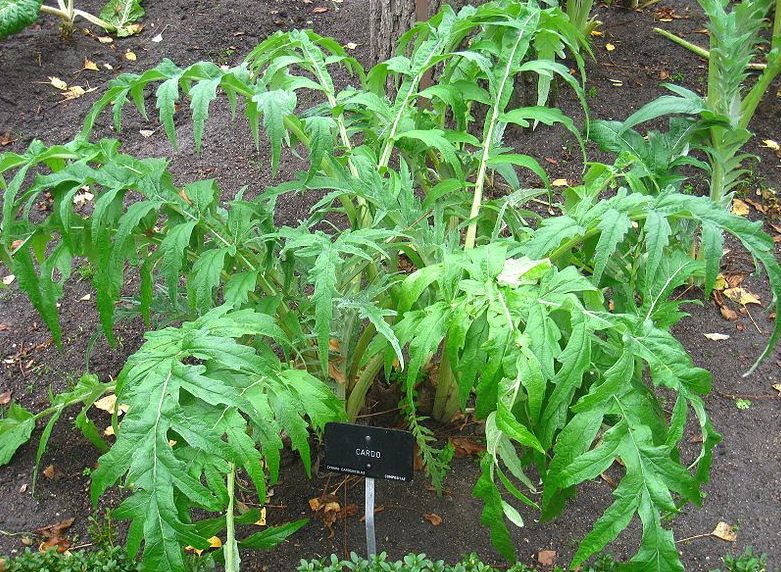









Sign up on lukeunfiltered.com or to check out our store on thebestpoliticalshirts.com.